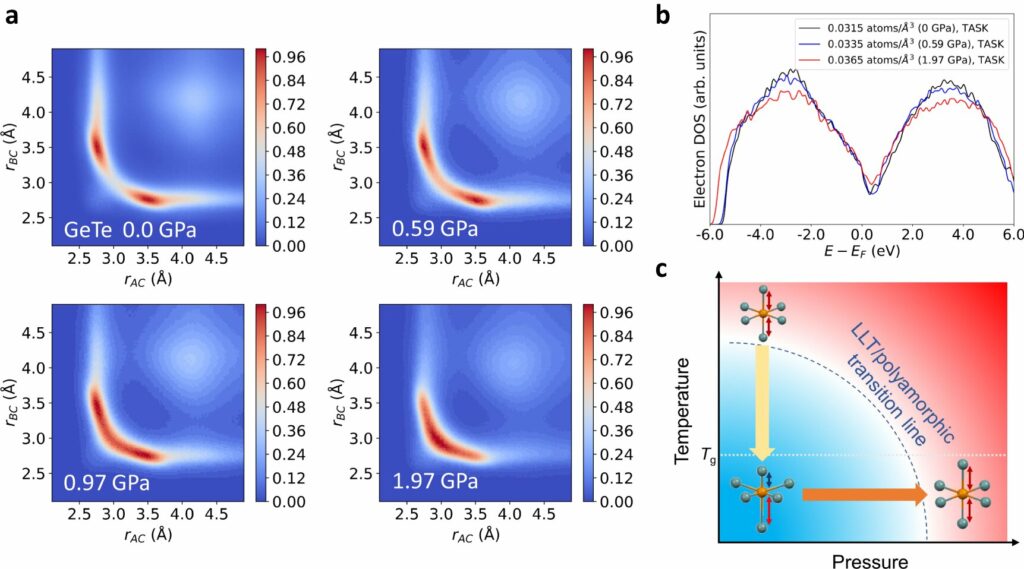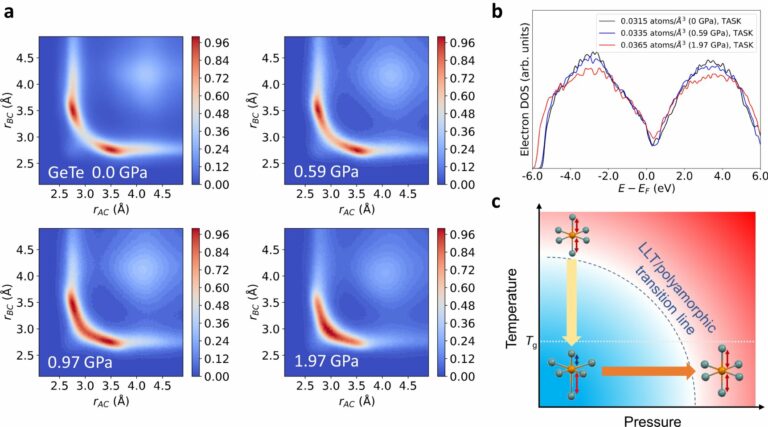A process of pressure-induced transformation into a glass phase, facilitating enhanced phase-change memories.

The application of temperature or pressure to a material induces a shift in its state, causing it to transition from a liquid to a solid or undergo structural changes while maintaining its solid form. This transformation is commonly referred to as a phase transition or change.
Glass is a solid that lacks a crystalline structure. Rapidly cooling a liquid leads to the formation of a supercooled liquid, avoiding crystallization beyond its freezing point, and progressing into a rigid, glassy state with further cooling.
While the atomic arrangement within glass may appear disordered, it actually displays various regularities intricately linked to the physical and chemical properties of glass. Furthermore, the properties of glass play a crucial role in phase-change materials, which are employed as recording films in the production of nonvolatile memory and optical disks like Blu-ray disks, where the specific characteristics of glass are vital for optimal device performance.
These materials exhibit considerable changes in their glass properties (phase transition) with variations in temperature and pressure; however, the underlying atomic arrangement changes have not yet been elucidated. A research group led by the University of Tsukuba combined high-pressure diffraction experiments using high-brilliance synchrotron radiation X-rays with numerical simulations utilizing machine learning to investigate changes in the atomic arrangement of phase-change materials (glasses) as a function of pressure. The paper is published in the journal Nature Communications. Researchers have found that the regular atom arrangement, called “Peierls-like distortion,” observed under atmospheric pressure is suppressed with increasing pressure. Furthermore, they found that the volumetric modulus of glass elasticity increases accordingly (i.e., the volume of glass does not change easily under pressure). The mechanism underlying such a phase transition in glass is essentially the same as that observed in a supercooled liquid. The behavior of phase-change materials when acting as supercooled liquids plays an important role in the writing speed and data retention of optical disks. These results demonstrate that the Peierls-like strain is an essential structural feature that determines the characteristics of phase-change materials. These results may provide a foundation for the development of new materials for advanced phase-change memory and other applications.
This article is republished from PhysORG under a Creative Commons license. Read the original article.
Do not forget to share your opinion with us to provide you with the best posts !





0 Comments